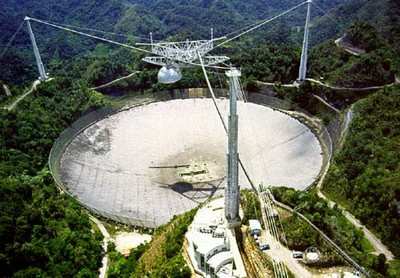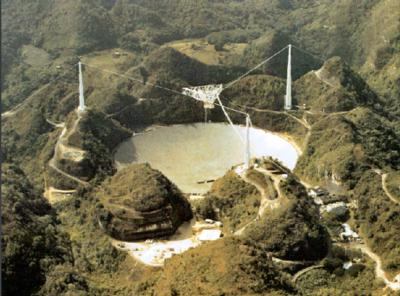Sun, Nov 22, 2020
NASA Comments on NSF’s Planned Controlled Decommissioning of Arecibo Radio Telescope
On Nov. 18, NASA was informed by the National Science Foundation (NSF) that, after careful assessment and consideration, they have decided to decommission the 305m radio telescope at the Arecibo Observatory in Puerto Rico, which recently sustained structural damage from failed cables.

The planetary radar capability at Arecibo, funded by NASA’s Near-Earth Object (NEO) Observations Program, has served as one of two major planetary radar capabilities. It has allowed NASA to fully characterize the precise orbits, sizes, and shapes of some NEOs passing within radar range after they are discovered by wide-field optical telescope survey projects.
For decades, the facility has been an important emblem of Puerto Rico’s commitment to international science research and education, and the discoveries enabled by Arecibo’s 305m radio telescope will continue to inspire the next generation of explorers. While the 305m radio telescope is being decommissioned, the Arecibo facility and its STEM education and other assets will continue.

While NASA was not directly involved in the investigation of what led to the observatory’s damage in August, the NSF communicated with stakeholders, including NASA, as their investigation proceeded. NASA respects the National Science Foundation’s decision to put the safety of those who work, visit, and study at the historic observatory above all else. NASA has facilitated some engineering assistance from NASA Centers at NSF’s request.
NASA’s Goldstone Observatory in California, another planetary radar, recently returned to full operations after successful delivery and testing of a new klystron tube for its high-power transmitter. Radars such as those at Goldstone and Arecibo are used only to characterize known NEOs, not to discover previously unknown asteroids and comets, so NASA’s NEO search efforts are not impacted by the planned decommissioning of Arecibo’s 305m radio telescope.
More News
“My father mastered a unique trio of skills, being an exceptionally good mechanical engineer, electrical engineer, and astute businessman. He set the bar high for himself and>[...]
Standard Terminal Arrival (STAR) Charts Designed to expedite air traffic control arrival procedures and to facilitate transition between en route and instrument approach operations>[...]
Less Than 8 Ounces Of Fuel Was Drained From The Fuel System On April 24, 2023, at 1030 eastern daylight time, an experimental amateur-built, Thatcher CX4, was substantially damaged>[...]
Aero Linx: National Air and Space Museum Take your curiosity to new heights. Explore the world’s premier collection of air and space artifacts, stories, and expertise. One mu>[...]
A Few Questions AND Answers To Help You Get MORE Out of ANN! 1) I forgot my password. How do I find it? 1) Easy... click here and give us your e-mail address--we'll send it to you >[...]
 Aero-News: Quote of the Day (06.05.24)
Aero-News: Quote of the Day (06.05.24) ANN's Daily Aero-Term (06.05.24): Standard Terminal Arrival (STAR) Charts
ANN's Daily Aero-Term (06.05.24): Standard Terminal Arrival (STAR) Charts NTSB Prelim: Thatcher CX4
NTSB Prelim: Thatcher CX4 ANN's Daily Aero-Linx (06.05.24)
ANN's Daily Aero-Linx (06.05.24) ANN FAQ: Q&A 101
ANN FAQ: Q&A 101




